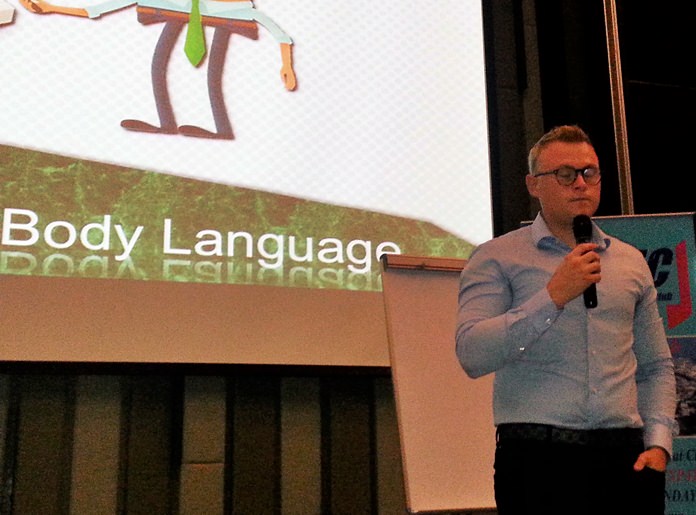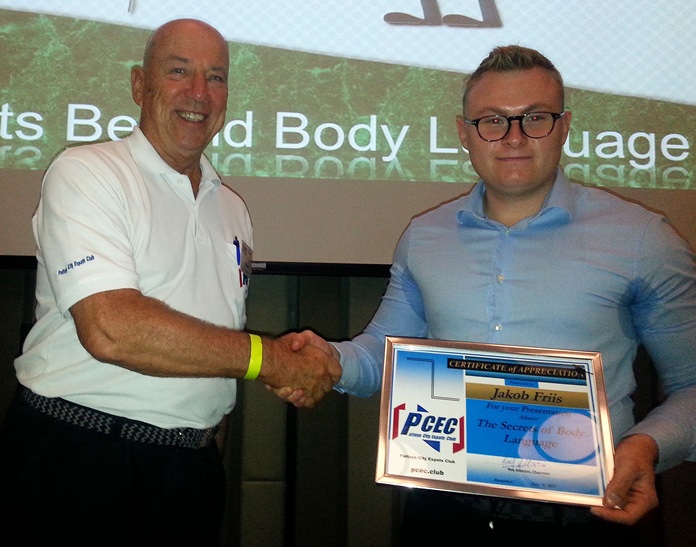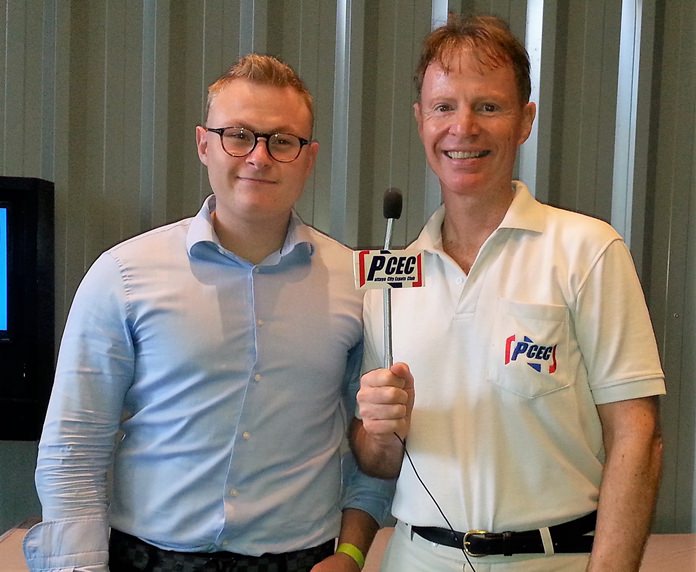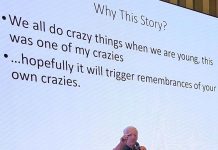
What does a handshake mean? Or, what can you glean from the way a person looks at you and how to use this information to your advantage? These and other questions were answered by Jakob Friis, the speaker at the Pattaya City Expats Club (PCEC) Sunday, July 9, meeting.
Jakob provided a very thought-provoking presentation concerning body language. Jakob was born in Denmark, but lived fourteen of his twenty-one years in Thailand. He has also spent four years in Oman. He is a university student, with a goal to obtain a doctorate in a body language/public speaking related field. When he observed many fellow students having issues with public speaking, he decided that there is an opportunity to start a business to help others. He started his business called Meptek which develops tools for optimizing presentations, particularly for students and researchers.

The focus of Jakob’s presentation was body language. His presentation technique involved audience participation. He had everyone stand and give each other high-5’s. He explained that the reason he did this was to demonstrate how we can provide mutual support to each other. He talked about a study of a winning basketball team that revealed their habit of constant high-5ing, as having a positive effect on their success.
Jakob posed three body language questions. What exactly is body language? How do you analyze body language and how can we use body language to our advantage?
Body language is simply non-verbal communication, sometimes involuntary. He showed a slide of a person sitting in a chair, in four different postures. He described how each posture clearly demonstrates different attitudes. One, a man is sitting confidently, but covering his “crown-jewels” shows that although the person seems confident, he may also feel somewhat insecure about the current environment. The cross-legged person is demonstrating a very strong disposition, who owns the environment, and is a dominating figure. The man with his hands behind his head, is very relaxed and feels that he is in a safe space. The man sitting with his hands on his lap, fidgeting a bit, is showing insecurity and nervousness. Looking at each posture provides insight to what kind of people you might be encountering.
Using a pie-chart, Jakob said the fifty-five percent piece of the pie represents body language. Another piece shows thirty-eight percent represents the tone of voice. The remaining piece showing seven percent represents the actual words. Therefore, a total of ninety-three percent of human communication is through body language/tone.
Jakob again had the audience stand and face a partner. He asked that they each repeat a line saying: “Nutella is the best thing in the world.” First, with no hand gestures and in a monotone, then again with hand gestures and adding an enthusiastic tone. This, Jakob said, demonstrated the impact of hand gestures and tone during a conversation, if you really want to make a strong point.
An age-old question was brought up concerning nature vs. nurture? He contends that body language is the result of nature. Studies have shown that people react to situations in like mannerisms. When one first meets a person, the first ninety seconds determines the answers to three questions. Does this person want to be a friend, an enemy or a sex partner? First, look at the hands. Do they pose a threat? Do they have a clinched fist or a weapon? If not, this will eliminate an enemy threat. Next, look at the face. He mentioned three possible triangles for the face and described their meaning.
Jakob talked about “power positions” that increase confidence, again using audience participation. Whether it is sitting with your hands behind your head, in-place running, hands on hip or confidently leaning against a wall, confidence is demonstrated. For a man, building testosterone builds confidence. Making oneself as large as possible increases testosterone, increasing confidence. Conversely making oneself small, increases a stress hormone, called cortisol. This hormone is present to allow one in a “fight-or-flight” in situation, to “flight” or get away from a situation you cannot win. During a presentation, one should try to avoid producing cortisol and instead, stand straight and put your hands on your hips.

Next, he spoke about one of the most overlooked gestures we commonly use during the first physical contacts between strangers, the handshake. Many attitudes and feelings are shown through the different styles of handshakes. Consider the position of your palm. It shows who’s in charge and who’s the lackey. Dominant people tend to shake hands with their hand on top and will usually reach your hand in that position. Low self-esteem and submissive types will offer the hand with the palms up.
Consider using a double-handed shake to show sincerity and a strong bond, which is a favorite of politicians. Some want to wrap the extra hand around the wrist, arm, or shoulder to show more emotion. Be cautious not to invade “personal space” and possibly antagonize a person. The limp “dead fish” handshake is not very satisfying and usually interpreted as weakness or indecisiveness. However, don’t be too quick to judge, as some people have arthritis or other medical problems.
Perhaps the best option is to position the palm vertically, parallel, to show a feeling of equality and mutual respect. Ideally the hold is firm, but not too tight; don’t linger with it too much, 1-2 shakes are enough.

Jakob’s presentation was well received and provided a lively question-answer period. Jakob will be giving a workshop about how to “Overcome Your Fear of Presentations.” It is sponsored by the Pattaya City Ladies Club and will be on July 24 at the Centara Grand Mirage Resort from 9:30am to 1pm. For information and reservations, contact [email protected].
The presentation was followed by announcements on upcoming events including activities by the PCEC’s Special Interest groups, and the Open Forum, where questions are made and answered about Expat living in Thailand.
For more information about the PCEC, visit their website at www.pcec.club.




